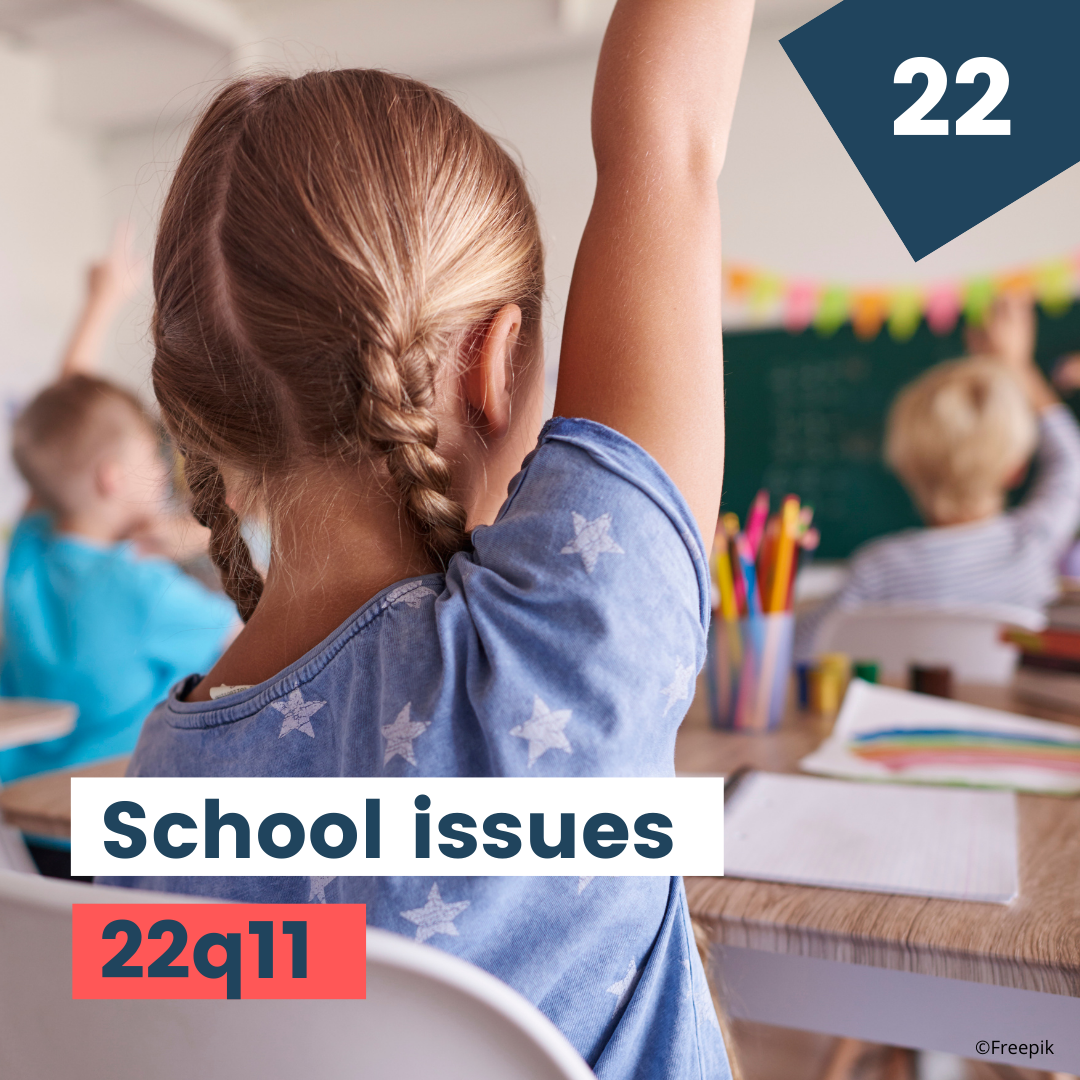Septembre 22 – Understanding 22q Deletion Syndrome! – 22Q11 Europe

Most children (90%) with 22q deletion experience some degree of developmental disability with delayed speech and language development as the most consistent feature.
In formal standardized testing, most school aged children have a full scale IQ in the category of borderline intellectual disability (full scale IQ of 71-85). A school aged child with 22q deletion will typically have an unusual neuropsychological profile with a significantly higher verbal IQ than performance IQ with strengths and weaknesses suggestive of a nonverbal learning disorder. During school years most of the children with 22q deletion will need some kind of educational support.
Common strengths
- Rote verbal learning and memory
- Reading, decoding and spelling
- Common difficulties
- Nonverbal processing
- Visual-spatial skills
- Complex verbal memory
- Attention
- Working memory
- Visual-spatial memory
- Mathematics
Attention and memory
Diagnosis of attention deficit disorder is common in 22q deletion.
- Attention to details but not the whole
- Problems with concentration on tasks
- Executive function difficulties affect planning, thinking flexibly and understanding abstract ideas. This may cause children to struggle to remember, process, and organize information efficiently. Also, these difficulties can cause problems in more complex math or in reading comprehension.
- May also affect social interactions because of the difficulty in planning and executing plans
Math
Math learning difficulties in 22q deletion include difficulties in understanding and representing quantities and in accessing the numerical meaning from symbolic digits.
- Individuals may show adequate fact retrieval while development of procedural strategies appears to be delayed.
- Word problems may be a significant area of weakness. They are challenging due to their procedural nature and difficulty in reading comprehension.
Motor and sensory
Poor muscle development in children with 22q deletion syndrome may lead to delayed motor milestones. This can lead to coordination problems that can persist into adolescence. Children may find it difficult to perform tasks that require dexterity and control of movements.
- Children may struggle with visual information to guide their actions. They may find it difficult to perform tasks requiring spatial awareness.
- Copying down text is difficult, as it requires coordination and the ability to hold information in memory for the short term.
Communication
Speech and language development is delayed in the majority of children with 22q deletion syndrome. This may be due in part to structural differences such as a cleft palate (a hole in the roof of the mouth) or to functional difficulties (either VPI or oral apraxia).
Hypernasal speech is common (75%).
- Excessively nasal speech due to velopharyngeal incompetence (VPI)
- VPI is a condition in which the soft palate does not close properly and the oral cavity is not closed off completely from the nasal cavity during speech.
- Some children with VPI experience nasal regurgitation in which food and drink comes out the nose.
Articulation disorders
- May be compensatory
- May be due to oral apraxia (inability to coordinate facial and lip movements) or dysarthria (weakness of oral muscles)
Slow vocabulary growth and difficulty in forming complex sentences is also commo


